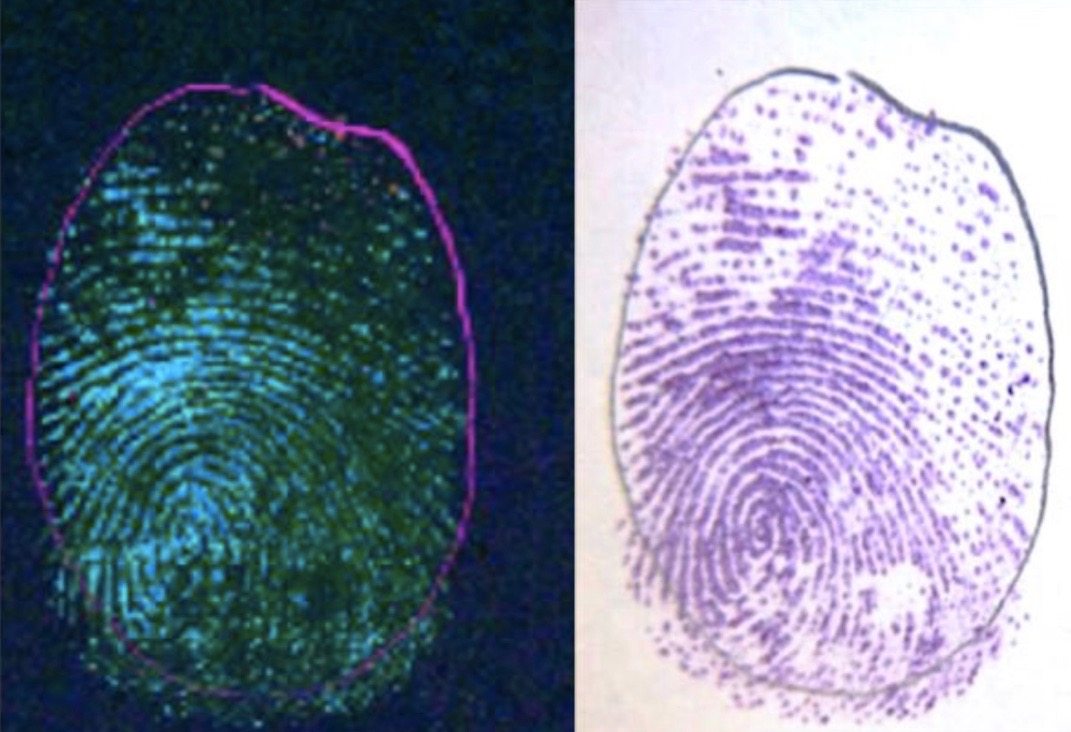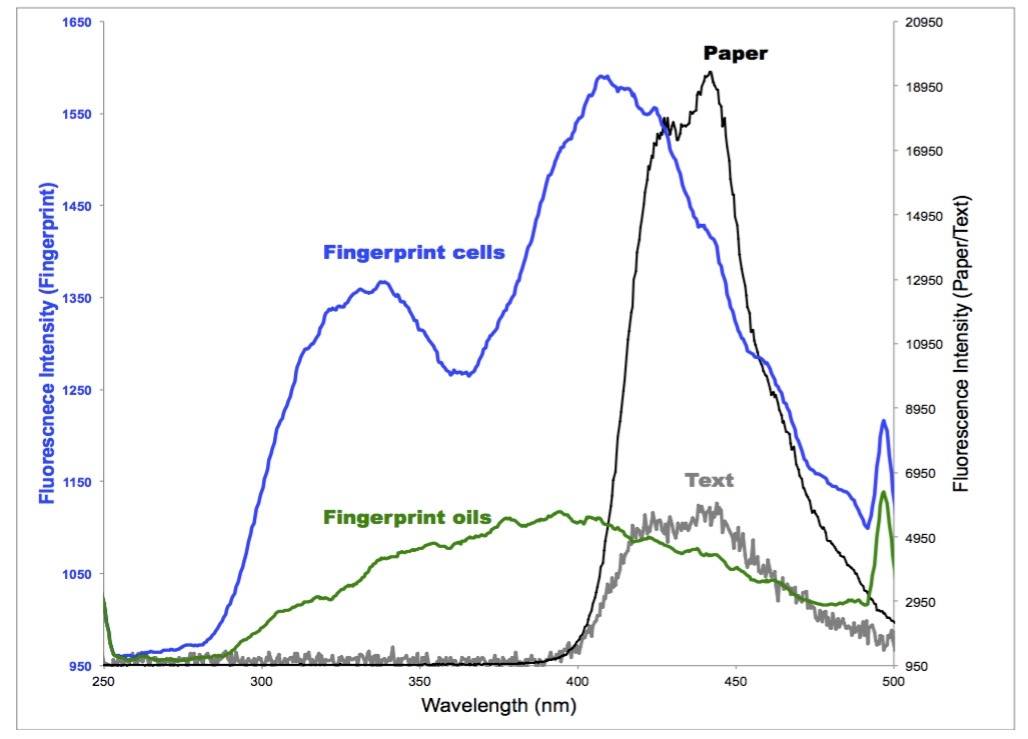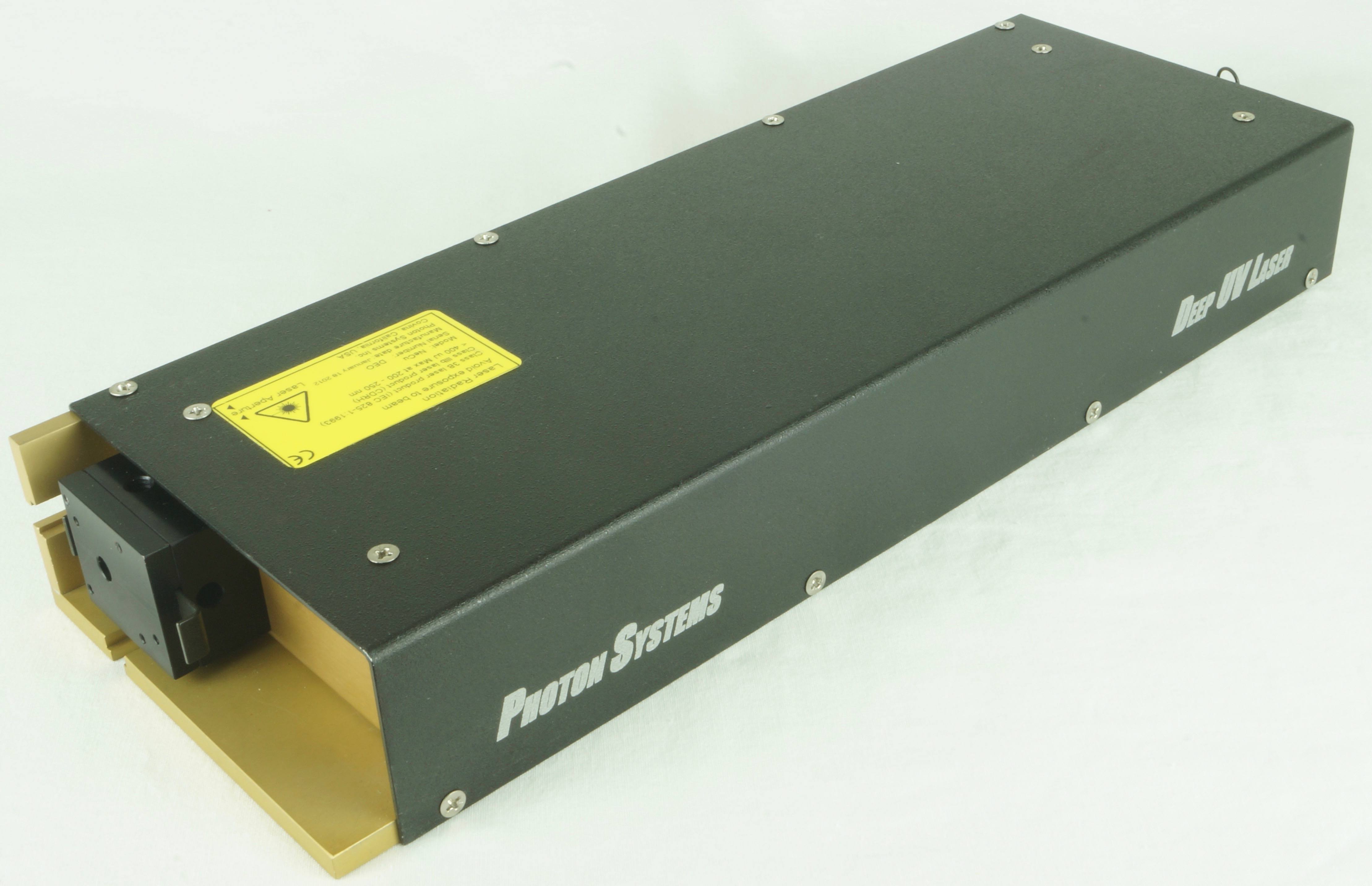Fingerprint detection and ridge morphology analysis traditionally requires the use of additives and taggants such as Ninhydrin or DFO to enhance the contrast between a fingerprint and the background substrate and enable imaging of defining ridge details. Once captured and scanned digitally, these can be processed and further enhanced to match to existing databases.
However use of these additives or taggants require the addition of a contaminant to a forensic scene. In additional, the processing eliminates, or seriously degrades, the use of post chemical analyses that could provide insight into any illicit chemicals that may be present associated with the fingerprint.
Therefore a major challenge in the fingerprint analysis community is to address the use of a non-contact, non-invasive, non-destructive method. This challenge does not assume the latent fingerprint is well preserved. In a real-world scenario, the fingerprint will degrade by exposure to heat, sunlight, oxidation, or other environmental attributed effects. While the chemistry may change and adversely effect current methods, deep UV fluorescence imaging is not tied to a specific chemical compound and is significantly more tolerant to these environmental influences.
Since the fundamental nature of fingerprints, either fresh or latent, is an organic residue on a surface, deep UV autofluorescence imaging translates well to fingerprint detection and morphological analysis. As with environmental samples, deep UV autofluorescence alone provides a wealth of information. In addition, with the deep UV laser excitation, deep UV Raman can be used for additional chemical-specific characterization of the fingerprint; providing an orthogonal dimension of profiling and analysis of what an individual may have come in contact with.
Deep UV autofluorescence is most sensitive to aromatic structures such as aromatic amino acids (tryptophan, tyrosine, phenylalanine) found in the majority of proteins and as free amino acids in eukaryotic and prokaryotic cells. In addition it is highly sensitive to single and polyaromatic hydrocarbons (benzene, naphthalene, anthracene, etc) and various thermally altered forms of carbon (coals, diesel soot, etc).
Detection of this range of materials is what makes deep UV fluorescence tolerant to environmental effects. A fresh fingerprint may have a significant amount aromatic amino acids, however, if heated, these can thermally degrade to bituminous carbon; an organic that is still detectable by the deep UV autofluorescence methods. In addition to detecting these materials, the use of the deep UV also provides a signature that enables differentiation between these materials.


Key Issues
Contamination
Additives and taggants contaminate a forensic scene and can degrade subsequent chemical analysis of fingerprints.
Sample Preservation
Non-contact, non-invasive and non-destructive methods of detection are desired.
Robust
Detection method must be robust and work on aged and degraded latent fingerprints.
Downloads
TUCS 1000
The TUCS 1000 is a handheld instrument for providing detection of laser based detection of trace chemical in the fg amount or pg/cm² concentration range using deep UV fluorescence with excitation at 224.3 nm or 248.6 nm.
Deep UV Lasers
The DUV family of lasers offer 224.3 nm and 248.6 nm for fraction of the cost of the competition. The laser is the size, weight and power consumption of a HeNe laser but with output in the deep UV.
DUV Raman PL 200
A fully integrated lab model deep UV resonance Raman and photoluminescence spectrometer with microscopic imaging.
Get In Touch
Keep informed about the latest deep UV developments at Photon Systems by joining our mailing list.
ADDRESS
1512 Industrial Park St. Covina, CA 91722-3417
PHONE
626 967-6431



